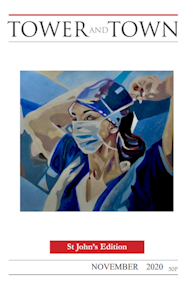

Tower and Town, November 2020 (view the full edition) (view the full edition)Fyfield DownOn a bright, crisp November afternoon, there is no better place for a wintry walk than Fyfield Down, accessed from the car park at the end of the road that leads north from the A4, almost opposite the turning into Manton.
If you are lucky, you should encounter flocks of fieldfares and redwings, winter migrants from Scandinavia. Fieldfares are large thrushes, identified in flight by their distinctly pale grey rumps and vigorous “chacking” calls. Always restless, the flocks scour the fields for invertebrates and when the ground freezes, they gorge on the red berries of hawthorn, holly or dog rose.
In an average winter, over a million of each of these thrush species will arrive in Britain. Hard frosts push them west and when conditions are really tough they come into urban gardens, scavenging for windfall apples or the berries of cotoneaster and pyracanthus. As the evening draws in and the thrushes head to roost, another ornithological drama begins to unfold in Delling or Wroughton Copse. Jackdaws and rooks, returning from feeding all over the Marlborough Downs, have been quietly massing in the surrounding fields, mostly on the ground, some posted as sentries to spot potential danger. Just before dark, huge flocks lift off and head for the trees where battle commences for the best roosting sites. A cacophony of cawing finally subsides as the colony of corvids settles for the night and a blanket of darkness descends over the ancient sarsen stones. Sean Dempster |